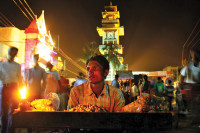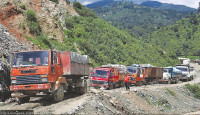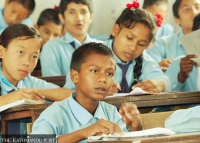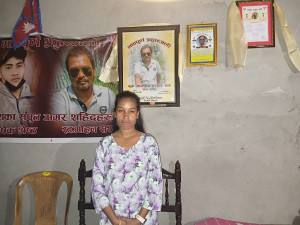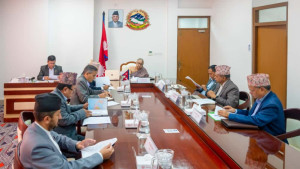Opinion
Free to perform
Nepal needs an independent and autonomous authority for recovery and reconstruction
Daman Bahadur Ghale
The formation of a high-level independent mechanism for reconstruction and rehabilitation has become the talk of the town in post-earthquake Nepal. In fact, there has been much delay in discussing such a robust mechanism considering the post-disaster state of the nation. It is the government’s responsibility to relieve its countrymen and women of their sufferings at this juncture as early as possible. Keeping our nation’s political instability and bureaucratic lethargy in mind, this mechanism looks to be the only option at our disposal. We can find similar successful modalities elsewhere in the region too, whether it be it a story of the National Disaster Management Authority of Pakistan for relief work or the Gujarat and Sichuan model of reconstruction in India and China to enhance the living standards of the people in the post-disaster period. It is the duty of the government of Nepal to look for the best available model and implement it. Such a model needs to be based on an action-oriented mechanism and be able to guide the nation at a time when its government is still confused about the way to move forward.
This mechanism demands an action plan to shorten the legal barriers and bureaucratic hassles and needs to include provisions that are free from any kind of political interference. Nepal must leave no stones unturned to rebuild the nation or be ready to face the consequences. Effective reconstruction demands a visionary road map and a team dedicated to transforming the plan into reality. What Nepal lacks is not the shortage of expertise, but the leadership of people with a vision and the guts to implement and complete tasks on time.
An autonomous body
The National Planning Commission has publicised the long-awaited framework of the reconstruction mechanism and provided much needed details of the quake through its document on the post-disaster needs assessment. Going by its proposal on the Reconstruction Authority, there is no harm in putting such a mechanism directly under the executive head of the government. The prime minister will be the de-facto chairperson and will be in a position to exercise the power as a chief of the mission and fulfil its mandated tasks within a given timeframe. But because the prime minister and his council of ministers are too busy with their day-to-day routine work, they will hardly be in a position to find time for the Reconstruction Authority.
Hence, this mechanism needs to be independent and autonomous in nature to perform its task of recovery and reconstruction. The only advantage of putting the mechanism directly under the the prime minister will be in doing away with red tapes and avoiding duplication. Still, this mechanism should be headed by an apolitical personality with practical and managerial skills and a clean track record. The Authority should not be contaminated by political influence, otherwise it will be another misfortune for the country.
Come together
It is also equally important to assure the donors and the international community that the Authority is capable of rebuilding the nation. For that, national political parties national powers, the private sector and local communities must unite.
China performed a miracle during its post-quake Sichuan reconstruction period with painstaking efforts from the government machinary, private sector and the general public. Nepal should also aim to have a comprehensive plan which categorising the areas of reconstruction, including private houses, public buildings, schools, hospitals, heritage sites and so on. The proposed mechanism needs effective resource mobilisation and efforts from all sectors in order to reassure the international community, internal stakeholders and the Nepali people.
Planning for the future
In order to ‘build back better’, the post-disaster reconstruction plan should address a wide range of prevalent issues and ensure that the affected communities can get back on their feet. The Great Quake is not only an opportunity to bring sustainable and livelihood changes, but also, ensure transformative changes in the affected community. In Aceh, Indonesia the ‘build back better’ slogan was used by the Indonesian government to build physical and economical resilience and bring a 30-year conflict to an end. Taking cue from such worldwide experiences, the government of Nepal should immediately conceptualise a comprehensive rehabilitation and reconstruction plan and that ensures economic rehabilitation, livelihood restoration and the long-term capacity to fight future disasters. The proposed mechanism cannot be delayed any longer. Its delay would only increase the risk of a conflict among the people.
Ghale is a former Major General of the Nepal Army




 16.12°C Kathmandu
16.12°C Kathmandu

